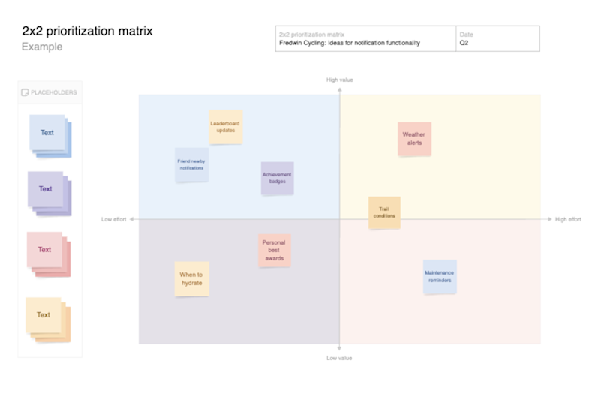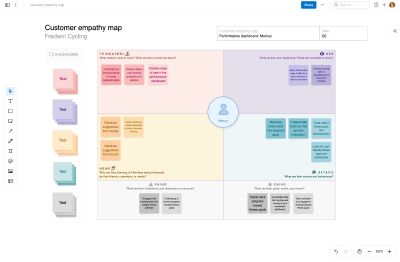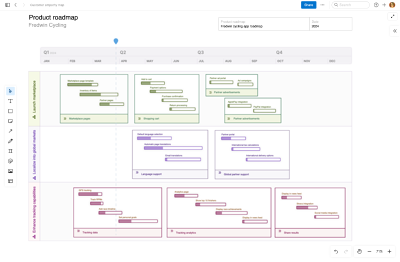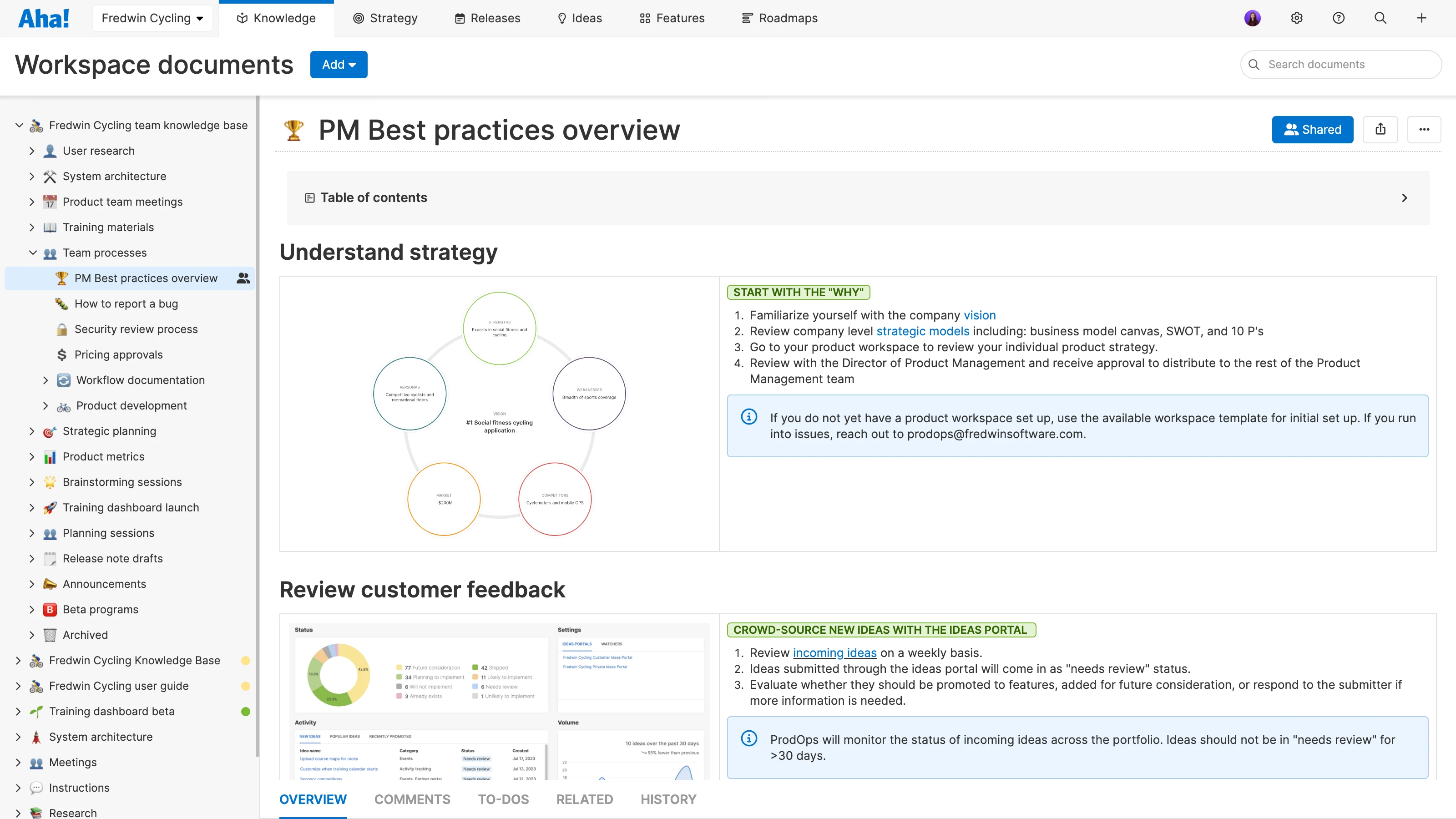An example of an internal knowledge hub created with Aha! software
When we say "internal knowledge hub," we mean a central place to create and organize team documentation. Think of it as a replacement for an outdated digital notebook or scattered files. Take our own knowledge base software as an example: Aha! Knowledge comes equipped with rich formatting options, drawing capabilities, pre-built templates, and collaborative whiteboards. And features such as guest access and live editing support real-time and asynchronous collaboration alike.
A knowledge hub is a great place to store any reference materials that the team needs access to. But it is also an excellent way to bridge unstructured and structured work. In Aha! software, for instance, you can embed a whiteboard into a note during a team brainstorming session. Teammates can add and move around sticky notes (and other elements) on the board. Once ideas begin to formalize into real plans, you can convert the sticky notes into real work items on your roadmap.
Top
Consolidating product docs in an internal knowledge hub
We know what you might be thinking. Do I really need another tool? If your existing product documentation is scattered across emails, spreadsheets, and file-sharing systems (that your team barely uses as it is), the idea of expanding your tool stack might raise eyebrows. Let's think about this differently, though.
Ideally, the software you use to build your internal knowledge hub replaces tools you already have — all while offering the same functionality and then some. No more separate logins or tabs just to get to your meeting notes. No more lost whiteboard sessions or stale product wikis that no one references.
This means your internal knowledge hub becomes the go-to internal resource for all there is to know about your product: how you make decisions, how you work together, and everything that goes into delivering value to customers. In that sense, it is both a repository and a forum, encouraging the team to be more organized, collaborative, and accountable throughout the product-building process.
The bulk of your day-to-day product work (think roadmapping, feature prioritization, and release management) will continue to happen in your roadmapping tool. Your internal knowledge hub is a space for ideation, documentation, and stakeholder alignment. (The benefit of choosing Aha! software is that knowledge capture and roadmapping capabilities are included in the same suite.)
The following table shares ideas on how to incorporate knowledge capture across various activities within product development:
Product development activity | Use cases for knowledge capture |
Strategy | Get started with early-stage strategic planning, ideating on your vision, product positioning, and goal frameworks before solidifying strategy. |
Discovery | Document early hypotheses, problem statements, and outreach plans. Capture key quotes and insights from customer interviews. |
Research | Organize and store findings from competitive analysis, customer research, and market trends. |
Ideation | Host brainstorming sessions with the team or map out new product concepts and diagrams on a whiteboard. |
Planning | Draft a product requirements document and create first-draft roadmaps before building out formalized product plans. |
Design | Collect sketches, wireframes, and mockups from design iterations. |
Development | Facilitate high-level sprint planning and capture notes from retrospective discussions. |
Analysis | Share performance metrics, KPIs, and progress against goals with stakeholders. |
Teamwork | Centralize meeting agendas and document team processes. |
Related:
Top
How to choose knowledge base software for your product team
You want a tool that will guide you toward creating high-quality product documentation and function as a collaborative space. Bonus points if it is purpose-built for product management teams.
This is why Aha! software is our recommendation (no surprise). That said, we think it is always a good idea to do your research before adopting new product tools for your team. Here is a quick checklist of what to look for as you evaluate knowledge base software:
Rich formatting options to add color, style, and structure to documents
Built-in whiteboards to allow for visual thinking within the same tool
Collaboration capabilities such as comments, reactions, and document sharing that foster frictionless teamwork
Productivity features such as to-do lists for easy task management
Efficient organization via folders and search functionality that helps you find information quickly
Pre-built templates to kick-start your thinking (and ideally, templates tailored specifically for product development work)
(Bonus) AI tools that can expedite the drafting process
(Bonus) A roadmap integration that allows you to connect documents and whiteboards to related features and releases
Knowledge base software has plenty of applications across a business. As you search out this software, it is worth factoring in use cases that extend beyond the product team. For example, you can create more wide-ranging knowledge hubs for cross-functional teams (such as sales, marketing, and UX) or external knowledge bases for customers that your support team maintain. Check out this guide for different ways teams can get the most out of an all-in-one knowledge base tool.
Once you select a knowledge base tool, consolidating all of your product docs can take upfront planning and meaningful effort. (Aha! provides a document importer if you happen to be switching from Confluence.) You will also need to plan, organize, and create a documentation system that works well for you. But in time, everyone will benefit from the improved access and alignment that comes with keeping everything in one place.



